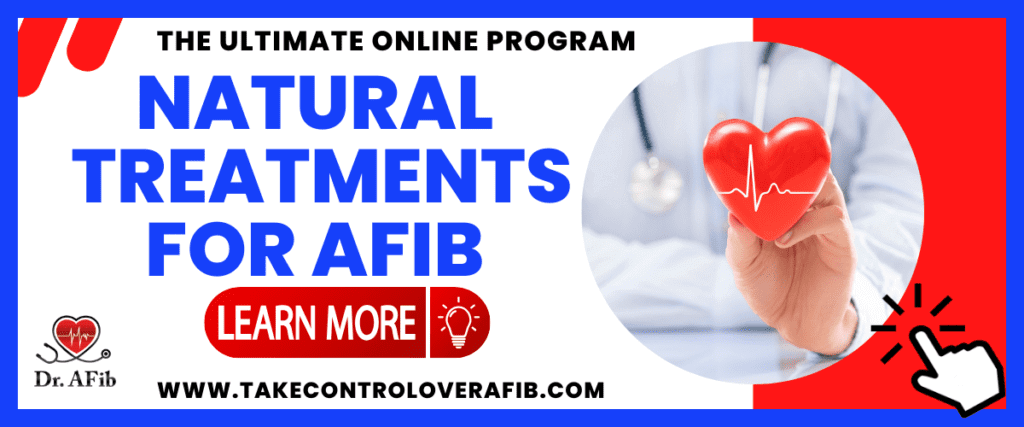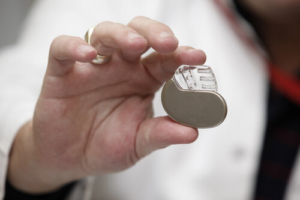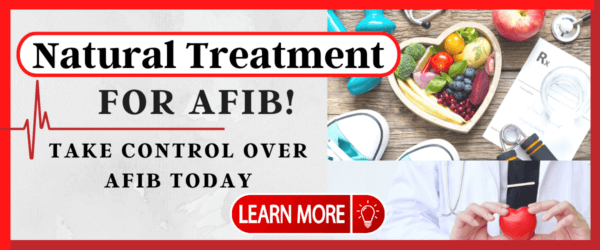Learn more about what causes AFib in this article. Atrial fibrillation (AFib), is a common heart condition affecting millions of people worldwide, can lead to potentially serious complications, such as stroke and heart failure. But what causes this irregular and rapid heart rhythm, and how can it be managed or even prevented? This blog post will explore the ins and outs of AFib, from understanding its nature to identifying the causes of atrial fibrillation, its symptoms, and risk factors, as well as discussing diagnosis, treatment, and prevention strategies.
By understanding the causes and triggers of AFib, recognizing its symptoms, and adopting a heart-healthy lifestyle, you can take control of your heart health and reduce the risk of developing this potentially life-altering condition. Let’s delve into the world of atrial fibrillation and learn how to keep our hearts beating strong and steady.
Key Takeaways
Atrial Fibrillation is a serious medical condition caused by various heart conditions, lifestyle triggers and other medical factors.
Symptoms of AFib should be taken seriously and addressed with medical advice. Risk factors such as age & high blood pressure can be managed through lifestyle changes to reduce the risk.
Diagnosis & treatment are essential for preventing complications, while prevention strategies include adopting a healthy lifestyle & controlling existing health conditions.
Understanding Atrial Fibrillation
Atrial fibrillation, or AFib, is an irregular heart rhythm that originates from the upper chambers of the heart, known as the atria. It is estimated that over 33 million people aged 55 and older have been diagnosed with AFib globally. According to the Heart Rhythm Society, atrial fibrillation can lead to:
the formation of blood clots in the heart
increasing the risk of stroke
heart failure
other cardiac complications.
The chaotic electrical signals in the atria cause a fast and irregular heart rhythm in atrial fibrillation. This condition will usually require treatment to prevent blood clots and reduce the risk of serious complications. In some cases, atrial fibrillation may progress from paroxysmal atrial fibrillation, which may go away on its own, to persistent AFib, which necessitates treatment to make it go away.
What Causes AFib: Primary Causes of Atrial Fibrillation
The primary causes of atrial fibrillation are often related to structural abnormalities of the heart. Heart diseases and health conditions that may lead to AFib include:
Advanced age: The most common cause of atrial fibrillation and the most significant one is age. If you ever see graph of people who have atrial fibrillation based by age, the prevalence of AFib starts to significantly increase as patient reach about 60 years of age.
The incidence of atrial fibrillation continues to increase sharply as people get older, to the point that when people get close to 80 years old, that prevalence of people having AFib gets close to about 10%.
This is usually attributed to age-related fibrosis. As people get older, they develop scar tissues inside of their heart, not that different from people getting wrinkles as they age as a comparison. People get fibrosis and scarring in their heart as they age, which can then lead to atrial fibrillation.
Heart surgery or stress associated with surgery or illness
High blood pressure
Coronary artery disease: Having had coronary artery disease in the past, such as a past heart attack or coronary artery stent placement, significantly increases risk for atrial fibrillation.
Heart valve disease: Particularly mitral valve disease such as mitral regurgitation and mitral stenosis. Aortic valve disease such as aortic stenosis or aortic insufficiency also increase risk but are less strongly associated with AFib when compared to mitral valve disease.
Congenital heart defects
Congestive Heart Failure or other Cardiomyopathy
Pericarditis
Hyperthyroidism
Lung diseases: The lungs are very closely associated to the heart and people who have lung diseases, whether that’s COPD or emphysema, or significant asthma can also have risk for developing atrial fibrillation. When people have lung disease, they have increased pressure inside of the lungs which then gets transmitted over to their heart and that could eventually lead to episodes of atrial fibrillation.
Sleep apnea: Another risk factor that is also common associated with obesity that can also cause atrial fibrillation is sleep apnea. There’s been a very strong association with sleep apnea and the development of atrial fibrillation and there have actually been a lot of studies showing that the treatment of sleep apnea can also improve a person’s atrial fibrillation.
Obesity: Obesity is also a cause of atrial fibrillation by itself due to its association with other health conditions like high blood pressure and diabetes; but obesity by itself can also be a cause for atrial fibrillation. There’s actually a lot of recent data that has shown how much weight loss can actually improve a person’s atrial fibrillation. Read here to learn more about reversing atrial fibrillation naturally through weight loss.
Endurance Training: Another risk factor for developing atrial fibrillation, which is still trying to be understood a bit more is endurance training. People who do long term endurance exercises, for example, long term endurance bike riding like MS 150’s, or triathlons, or marathon runners. These really extreme long distance exercise patients can develop atrial fibrillation as well.
Some studies have shown that in these people who do endurance exercises end up developing some fibrosis in their atrium, which can lead to episodes of atrial fibrillation. So that’s a risk factor that is becoming more recognized and the data is starting to become out more as a potential risk factor for developing atrial fibrillation.
In some cases, atrial fibrillation may occur without any known heart disease or heart damage.
Comprehending the fundamental causes of atrial fibrillation is key for preventive measures and treatment. Insight into the heart conditions and medical factors tied to AFib assists individuals and healthcare providers in making informed decisions for superior heart health.
What Causes AFib: Past Heart Conditions
Atrial fibrillation is typically associated with changes or damage to the heart’s tissue and electrical system, usually caused by:
Coronary artery disease
High blood pressure
Heart valve disease
Cardiomyopathy
Congenital heart defects
Diabetes
These heart conditions might result in structural changes in the heart, disrupting its normal functioning and possibly leading to atrial fibrillation. Pinpointing and managing these underlying heart issues are vital to the prevention and treatment of AFib.
What Causes AFib: Other Medical Factors
Besides heart conditions, other medical factors can contribute to the development of atrial fibrillation. High blood pressure and diabetes, for example, are additional medical factors that may lead to AFib. High blood pressure can strain the heart, resulting in an irregular heartbeat and atrial fibrillation.
Furthermore, several other medical factors can be associated with atrial fibrillation, such as:
Thyroid problems
Lung diseases
Sleep apnea
Obesity
Diabetes
Alcohol and drug abuse
Family history
Age
Understanding and managing these factors can help reduce the risk of developing atrial fibrillation.
Lifestyle Triggers of Atrial Fibrillation
Lifestyle factors can act as triggers for atrial fibrillation. Alcohol consumption, caffeine intake, stress, lack of sleep, smoking, obesity, and physical exertion have all been identified as triggers of AFib. Alcohol consumption, for example, can increase the risk of atrial fibrillation, as it can result in dehydration and electrolyte imbalances.
Caffeine consumption, on the other hand, can lead to an increased risk of AFib due to its effects on heart rate and blood pressure, in some people. Other factors that can elevate the risk of atrial fibrillation include:
Stress
Lack of sleep
Smoking
Obesity
Recognizing and controlling these lifestyle triggers can aid in preventing or regulating atrial fibrillation.
Causes of AFib: Managing Stress
Stress has been identified as a potential trigger for atrial fibrillation, as it can cause an elevation in heart rate and blood pressure, leading to an irregular heartbeat. Effectively handling stress is key to lowering the risk of AFib and sustaining general heart health. Some of the most effective methods for managing stress include:
Engaging in regular physical activity
Practicing relaxation techniques
Ensuring adequate sleep
Establishing a nutritious diet
Connecting with others
Setting realistic objectives
Taking breaks and participating in enjoyable activities
It is important to be aware of unhealthy coping mechanisms, such as:
excessive alcohol consumption
smoking
overeating
drug use
withdrawing from social activities
If stress becomes overwhelming and significantly impacts daily life, it is prudent to seek professional help.
Alcohol and Tobacco
Alcohol and tobacco use can have a detrimental impact on the progression of atrial fibrillation. Research has indicated that alcohol consumption may increase the risk of AFib, as it can disrupt the normal electrical signals in the heart. Additionally, tobacco use, particularly smoking, may increase the risk of atrial fibrillation and worsen symptoms in those who already have the condition.
To manage atrial fibrillation, it’s recommended to limit alcohol intake and avoid tobacco use. Cutting down on alcohol and tobacco, and complete cessation if possible, can enhance overall heart health and decrease the probability of developing AFib.
Signs and Symptoms of Atrial Fibrillation
Atrial fibrillation symptoms can vary from person to person and may not always be noticeable. Typical signs of AFib include:
An irregular and rapid pulse
Exhaustion
Lightheadedness
Breathlessness
Chest discomfort
The most common symptoms of atrial fibrillation include:
Irregular heartbeat or palpitations
Rapid or pounding heartbeat
Fatigue or weakness
Shortness of breath
Dizziness or lightheadedness
Chest pain or discomfort
Fainting or near-fainting episodes.
The identification of atrial fibrillation symptoms is vital for prompt medical intervention and prevention of potential life-threatening complications. Awareness of these symptoms and seeking medical advice when they occur is of utmost importance.
Read more about AFib symptoms here.
When to Seek Medical Help
It is imperative to schedule a health checkup if you have symptoms of atrial fibrillation. Seeking medical advice for potential AFib symptoms and the importance of regular checkups can help detect issues early on and provide appropriate treatment. Consistent heart and pulse checks are essential for those vulnerable to atrial fibrillation to monitor their heart health and detect any abnormalities.
In case of a medical emergency, such as experiencing chest pain, it is recommended to seek immediate medical help. Consulting with your healthcare provider regarding appropriate steps to take in the event of an emergency can help ensure timely and effective care.
Learn more about when to seek emergency care for AFib here.
Risk Factors for Atrial Fibrillation
Various risk factors contribute to the development of atrial fibrillation, with age and elevated blood pressure being the primary risk factors. Lifestyle factors such as smoking, alcohol consumption, and recreational drug use may also increase the risk of developing atrial fibrillation.
Grasping these risk factors and implementing suitable measures to control them can reduce the likelihood of developing atrial fibrillation. By adopting a heart-healthy lifestyle and controlling existing health conditions, individuals can decrease their AFib risk and maintain their overall heart health.
Modifiable Risk Factors
Obesity, physical inactivity, excessive alcohol consumption, tobacco use, high blood pressure, diabetes, and sleep apnea are all considered modifiable risk factors for atrial fibrillation. Addressing these risk factors can help reduce the risk of developing AFib and improve overall heart health.
For example, to lower the risk of AFib, it is recommended to:
Maintain a healthy weight
Engage in regular physical activity
Limit alcohol consumption
Quit smoking
By taking these steps, individuals can lower their risk of developing AFib and promote a healthier heart.
By making lifestyle changes and managing modifiable risk factors, individuals can take control of their heart health and reduce the risk of developing atrial fibrillation. Proactively addressing these risk factors can lead to better heart health and a decreased likelihood of AFib.
Diagnosis and Treatment of Atrial Fibrillation
The diagnostic process for atrial fibrillation typically involves physical examinations and diagnostic tests. Once diagnosed, treatment options for AFib may include medications, therapy to restore the heart’s regular rhythm, and procedures to interrupt faulty heart signals. The primary objectives of AFib treatment are to regulate heart rate and rhythm, reduce the likelihood of stroke, and address symptoms.
Having a clear understanding of the diagnostic process and treatment options for atrial fibrillation enables individuals and healthcare providers to make informed decisions for superior heart health. Prompt diagnosis and correct treatment can prevent severe complications and enhance the quality of life for those with AFib.
Diagnostic Tests
Various diagnostic tests are used to diagnose atrial fibrillation, such as:
Electrocardiograms (ECGs): a diagnostic test that records the electrical activity of the heart
Holter monitors: a device that is worn for 24 hours or more to record the electrical activity of the heart
Event monitors: a medical device that is worn for a period of time to record the electrical activity of the heart
Echocardiograms: an ultrasound of the heart
These diagnostic tests can help healthcare providers get atrial fibrillation diagnosed and determine the most appropriate treatment options. Early diagnosis and intervention can help prevent complications and improve overall heart health.
Treatment Goals
The main goals of AFib treatment are to control heart rate and rhythm, reduce stroke risk, and manage symptoms. Treatment options for controlling heart rate and rhythm may include medications, electrical cardioversion, and ablation. To reduce stroke risk, anticoagulant medications may be prescribed, and lifestyle modifications and avoiding known triggers can also help.
Managing symptoms may involve medications, lifestyle modifications, and stress management techniques. By addressing these treatment goals, individuals with atrial fibrillation can improve their quality of life, prevent complications, and maintain better heart health.
Read more details about common AFib treatments here.
AFib Prevention Strategies
Preventing atrial fibrillation involves adopting a heart-healthy lifestyle and controlling existing health conditions. Some basic heart-healthy tips to prevent AFib include:
Maintaining a healthy weight
Engaging in regular physical activity
Eating a balanced diet
Managing stress
Avoiding smoking and excessive alcohol consumption
Successful strategies for preventing atrial fibrillation include tackling modifiable risk factors such as:
Obesity
Physical inactivity
Excessive alcohol consumption
Tobacco use
High blood pressure
Diabetes
By concentrating on these factors and making suitable lifestyle adaptations, individuals can diminish their risk of developing atrial fibrillation and preserve overall heart health.
How To Reverse Atrial Fibrillation Naturally
If you are interested in natural treatment options for atrial fibrillation and are highly motivated in improving your symptoms naturally, to reduce your need for medications or even procedures, then take a look at my one-of-a-kind, online educational program, Take Control Over AFib.
Lifestyle modifications and reducing inflammation are essential components of the long-term management of atrial fibrillation. Addressing the source cause of atrial fibrillation can lead to a significant benefit for most AFib patients. Targeted lifestyle modifications can reduce your symptoms, reduce your reliance on medications or procedures, and even improve the long-term success rate of a catheter ablation procedure for AFib. However, most patients are not given instructions or tips on how to accomplish these essential lifestyle modifications in an AFib targeted style.
This is exactly why I created the Take Control Over AFib Program, to give people a step-by-step plan to improve and potentially reverse atrial fibrillation naturally.
Thinking about lifestyle modifications is easy, but putting in place a system to keep you committed to achieve real results takes time and dedication, and with my step-by-step plan, we can achieve powerful and long-lasting results together.

Learn More About The Take Control Over AFib Program Here
Summary
Atrial fibrillation is a common but potentially serious heart condition characterized by an irregular and rapid heart rhythm. Understanding the causes, symptoms, risk factors, diagnostic tests, and treatment options for AFib is crucial for maintaining heart health and preventing complications. By adopting a heart-healthy lifestyle, managing existing health conditions, and addressing modifiable risk factors, individuals can reduce their risk of developing atrial fibrillation and maintain a strong, steady heartbeat.
Remember that the key to a healthy heart lies in awareness, prevention, and timely intervention. Stay informed, make conscious choices, and prioritize your heart health to live a fulfilling, active life free of atrial fibrillation.
Frequently Asked Questions
What is the main cause of atrial fibrillation?
Atrial fibrillation (AFib) is a common heart arrhythmia that has multiple underlying causes. These can include hypertension, coronary artery disease, and valvular heart disease, which can create structural abnormalities in the heart. Other factors such as thyroid disorders, excessive alcohol consumption, obesity, and sleep apnea can also contribute to the development of AFib. Additionally, some cases may be linked to genetic predispositions. Stress and other lifestyle factors may act as triggers, but are not usually considered primary causes.
What is the biggest risk factor for AFib?
Advancing age, high blood pressure, obesity, European ancestry, diabetes, heart failure, ischemic heart disease and hyperthyroidism are all major risk factors for atrial fibrillation (AFib).
Age is the biggest risk factor, as one in ten people over 80 have the heart condition.
What is the difference between atrial fibrillation and atrial flutter?
Atrial flutter is a less chaotic heart rhythm disorder compared to atrial fibrillation, as its electrical signals are more organized and regular.
How is atrial fibrillation diagnosed?
Atrial fibrillation is usually diagnosed through physical exams and diagnostic tests such as ECGs, Holter monitors, event monitors, and echocardiograms.
What are the goals of atrial fibrillation treatment?
The main goals of AFib treatment are to control heart rate and rhythm, reduce stroke risk, and manage symptoms in order to ensure the health and wellbeing of patients.
The Best Atrial Fibrillation Book
Your Complete Guide To AFib: The Essential Manual For Every Patient With Atrial Fibrillation
$15.95 (as of April 26, 2024 10:31 GMT -06:00 - More infoProduct prices and availability are accurate as of the date/time indicated and are subject to change. Any price and availability information displayed on [relevant Amazon Site(s), as applicable] at the time of purchase will apply to the purchase of this product.) The A to Z guide on everything you need to know about atrial fibrillation. Written by AFib expert Dr. Percy Morales MD. Over 120 pages of essential information on medications, procedures, and lifestyles modifications for AFib. Easy to read for every patient.
Shop AFib Products on Amazon
KardiaMobile 6-Lead Personal EKG Monitor – Six Views of The Heart – Detects AFib and Irregular Arrhythmias – Instant Results in 30 Seconds – Works with Most Smartphones - FSA/HSA Eligible

KardiaMobile 1-Lead Personal EKG Monitor – Record EKGs at Home – Detects AFib and Irregular Arrhythmias – Instant Results in 30 Seconds – Easy to Use – Works with Most Smartphones - FSA/HSA Eligible

Apple Watch Series 9 [GPS 41mm] Smartwatch with Storm Blue Aluminum Case with Silver Sport Band M/L. Fitness Tracker, Blood Oxygen & ECG Apps, Always-On Retina Display

Fitbit Sense 2 Advanced Health and Fitness Smartwatch with Tools to Manage Stress and Sleep, ECG App, SpO2, 24/7 Heart Rate and GPS, Shadow Grey/Graphite, One Size (S & L Bands Included)

OMRON - Complete Wireless Upper Arm Blood Pressure Monitor + EKG - Built-in Bluetooth Technology

Omron Hem 7361T Bluetooth Digital Blood Pressure Monitor with Afib Indicator and 360° Accuracy Intelliwrap Cuff for Most Accurate Measurements (White)

EMAY Portable ECG Monitor | Record ECG and Heart Rate Anytime Anywhere | Stand-Alone Device with LCD Screen and Storage | No Subscription Required

Samsung Galaxy Watch 6 44mm Smartwatch with HR Zones, Sleep Coaching, Heart Monitor - Graphite

Natural Rhythm Triple Calm Magnesium 150 mg - 120 Capsules – Magnesium Complex Compound Supplement with Magnesium Glycinate, Malate, and Taurate. Calming Blend for Promoting Rest and Relaxation.

Pure Encapsulations Magnesium (Glycinate) - Supplement to Support Stress Relief, Sleep, Heart Health, Nerves, Muscles, and Metabolism* - with Magnesium Glycinate - 180 Capsules


















![Apple Watch Series 9 [GPS 41mm] Smartwatch with Storm Blue Aluminum Case with Silver Sport Band M/L. Fitness Tracker, Blood Oxygen & ECG Apps, Always-On Retina Display #1](https://m.media-amazon.com/images/I/311xwtp4mFL._SL100_.jpg)
![Apple Watch Series 9 [GPS 41mm] Smartwatch with Storm Blue Aluminum Case with Silver Sport Band M/L. Fitness Tracker, Blood Oxygen & ECG Apps, Always-On Retina Display #2](https://m.media-amazon.com/images/I/41j+8AaUGsL._SL100_.jpg)
![Apple Watch Series 9 [GPS 41mm] Smartwatch with Storm Blue Aluminum Case with Silver Sport Band M/L. Fitness Tracker, Blood Oxygen & ECG Apps, Always-On Retina Display #3](https://m.media-amazon.com/images/I/41jIyxZitnL._SL100_.jpg)
![Apple Watch Series 9 [GPS 41mm] Smartwatch with Storm Blue Aluminum Case with Silver Sport Band M/L. Fitness Tracker, Blood Oxygen & ECG Apps, Always-On Retina Display #4](https://m.media-amazon.com/images/I/41IpNJERjCL._SL100_.jpg)
![Apple Watch Series 9 [GPS 41mm] Smartwatch with Storm Blue Aluminum Case with Silver Sport Band M/L. Fitness Tracker, Blood Oxygen & ECG Apps, Always-On Retina Display #5](https://m.media-amazon.com/images/I/31o17yhfYpL._SL100_.jpg)

















































